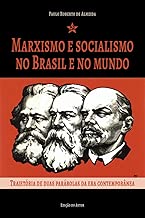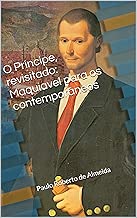Existem algumas grandes teorias que se mantêm durante certo tempo, para depois soçobrar no avanço de teorias mais sofisticadas, ao sabor de novas pesquisas, novas experiências, novas descobertas. A teoria da "terra é redonda", por exemplo, estava explícita desde a mais remota antiguidade, pela simples observação dos astros, o que não impediu idiotas de proclamar a "teoria" da "terra plana". A física newtoniana se manteve durante séculos, até ser corrigida pela relatividade de Einstein. O marxismo soçobrou no grande desastre comunista do século XX, mas já tinha sido desmentido por bons economistas desde o século XIX, que no entanto não conseguiram desmantelar a poderosa força da filosofia social de Marx. O keynesianismo tinha muitas inconsistências, teóricas e práticas, mas ainda assim se mantém como a grande "teoria macroeconômica". O freudismo ainda se mantém, mas sempre teve derivações mais sérias (junguianas, por exemplo) e outras francamente ridículas (como o "lacanismo"). Finalmente, a teoria da seleção natural se mantém, a despeito dos idiotas do criacionismo e do desenho inteligente. Assim vamos...
Paulo Roberto de Almeida
Brasília, 21/12/2019
Mises Institute, December 21, 2019
In 1959, Henry Hazlitt's book, The Failure of the "New Economics," was published by D. Van Nostrand Company, a reputable but midsized publishing company. The book was subtitled An Analysis of the Keynesian Fallacies.
This was Hazlitt's magnum opus. That is to say, it was his great work. Yet it was narrowly focused. It was a monograph. In clear prose, he took apart John Maynard Keynes's magnum opus, The General Theory of Employment, Interest, and Money (1936), the book that indirectly reshaped economic theory in the second half of the twentieth century.
The Book Almost Nobody Has Read
Almost no one has ever read the book. There is good reason for this. Keynes' book is unreadable. Its arguments are incoherent. This is why we rarely see direct quotes from the book. Keynesianism did not become a major factor in the thinking of most economists until 1945. The Keynesian movement accelerated in 1948 because of the first edition of Paul Samuelson's textbook
Economics. I own a reprint of that original edition. Keynes is not quoted in the book. Samuelson mentioned him on pages 253 and 303. The book and its later editions have sold something in the range of
four million copies. It was the most successful economics textbook of the twentieth century. It shaped the thinking, or rather the non-thinking, of millions of students for seventy years. Yet almost none of these students has ever read
The General Theory cover to cover.
Samuelson in 1946 wrote a laudatory assessment of the impact of The General Theory. It was published in Econometrica, an academic journal not noted for its clarity.
In any case, it bears repeating that the General Theory is an obscure book, so that would be anti-Keynesians must assume their position largely on credit unless they are willing to put in a great deal of work and run the risk of seduction in the process. The General Theory seems the random notes over a period of years of a gifted man who in his youth gained the whip hand over his publishers by virtue of the acclaim and fortune resulting from the success of his Economic Consequences of the Peace.
A reprint of his article is
here.
The General Theory was not well received at the time of this publication. Richard Ebeling, a Misesian economist,
wrote in 2004,
Except for some of Keynes’s young protégés at Cambridge University, most of the reviewers of the book were highly critical of many of its theoretical “innovations,” as well as its inflationary prescriptions for unemployment. Even some economists who later became proponents of Keynes’s “new economics” were initially highly critical of his work. For example, Alvin Hansen, who was one of the leading advocates of Keynesian economics in the United States in the 1950's and 1960's, wrote in late 1936 that The General Theory “is not a landmark in the sense that it lays the foundation for a ‘new economics.’ … The book is more a symptom of economic trends than a foundation stone upon which a science can be built.”
Yet within a few years, and most certainly by the end of World War II, Keynes’s ideas had virtually pushed aside every other explanation of the causes and cures of economic depressions. Keynes’s book became the foundation stone for the new “macroeconomics.”
In contrast to Keynes's book, Hazlitt's book is readable, although not so readable as all of his other books. That is because he had to spend his time trying to make sense out of Keynes's convoluted prose and shifting definitions. But the book is coherent, and his explanations are lucid, as long as he was not directly citing Keynes.
I read the book in the summer of 1963. I know this because I used to write the date on which I had bought a book on the front inside cover page. I did not read Economics in One Lesson until 1971, when I became a senior staff member at the Foundation for Economic Education (FEE). The first book spoiled me. It really is a tour de force. I realize that the second book was his bestseller and is a fine introductory book for people who know nothing about economic theory, but his book on Keynes outshines it. Unfortunately, almost nobody has read it. It remains an unread book that demolishes an equally unread book.
In 1960, Van Nostrand published a follow-up volume edited by Hazlitt, The Critics of Keynesian Economics. It is a compilation of scholarly articles written by critics of Keynes.
The Mises Institute has done yeoman service in making certain that both of these books remain in print, and both of them remain available in PDF format free of charge.
The Memory Hole
Hazlitt's book was not the first full-length book to criticize Keynes or the longest. That honor belongs to Arthur Marget, who was the first economist to devote a book to critiquing a narrow aspect of Keynes's
General Theory. It is a two-volume behemoth of over fourteen hundred pages,
The Theory of Prices. It also covered Keynes's earlier book,
Treatise on Money (1930). The first volume was published in 1938; the second volume was published in 1942. It was unknown when it was published, and it remained unknown after it was republished in 1966. It is not as incoherent as Keynes's book, but it is turgid, prolic, and unread. Almost no economist has ever heard of Marget. That was true in his day, too. There is no Wikipedia entry on him. His book did not go down the memory hole. It was published at the bottom of the memory hole, and it remained there. John Egger wrote a
detailed review of it in 1995, which gives you some indication of just how obscure it is. It took over half a century to get a detailed review. Egger concluded, "Labels aside, Marget's work offers scholarship in the history of monetary doctrine that is unmatched, and an analysis of processes that is in some respects unmatched, in explicitly Austrian works. 'Prolixity' or not, it deserves to be recognized as an exciting and significant contribution to the tradition of the methodologically individualistic analysis of monetary processes." The use of the adjective "exciting" to describe this book I regard as exaggerated. The Mises Institute has made a PDF available of each volume.
Hazlitt in 1959 was a well-known economist. He had a regular column in
Newsweek from 1946 to 1966. The Mises Institute has reprinted those articles in a massive 800-page book,
Business Tides. Yet despite his name identification, the economic guild successfully blacked out references to Hazlitt's book on Keynes. I never recall seeing a footnote to the book in any academic economic article other than those published in Austrian school journals.
The economists' academic guild never took Hazlitt seriously. After all, Hazlitt did not go to college. Keynes did go to college, but he did not major in economics. He majored in mathematics. That certainly did not in any way hamper his capture of the academic guild after 1945.
We have waited for seven decades for some other economist with Hazlitt's ability to penetrate an opponent's arguments, analyze them critically, and report on why they (1) are incoherent and (2) fail to deal with economic reality. W. H. Hutt, did attempt to do this in a 1963 book,
Keynesianism — Retrospect and Prospect, and a follow-up book,
The Keynesian Episode: A Reassessment(1980), but Hutt's books were turgid and uninspiring. I say this as a fan of Hutt. I had intended to study economics under him. He got me a graduate fellowship when our joint plans fell through in 1967. In refuting Keynes, he allowed Keynes's convoluted arguments to overwhelm his own prose. These two books never gained traction. Even within the free market, anti-Keynes community, they never gained traction. In
a 1971 article, Hutt commented on this:
I had expected reasoned objections to my rigorously-stated argument following the publication of my book. None has been forthcoming. Nor has a subsequent article of mine (entitled Keynesian Revisions) which submitted further evidence of a retreat by major exponents of the Keynesian gospel, called forth any reply. In the meantime the retreat has continued although, apart from Leijonhufvud's impressive and scholarly critique, I am aware of no further direct attack on the Keynesian system.
Leijonhufvud's 1968 book, On Keynesian Economics and the Economics of Keynes: A Study in Monetary Theory, is also impenetrable. It was written for his academic peers, but it had no effect in slowing down the Keynesian juggernaut. It was not a hard-core assault on Keynesian economics. It did not get reprinted. It has long since disappeared.
He noted in the book's Introduction that the exegesis of The General Theoryhad fallen into disfavor. What he did not mention was that this exegeting had been required after 1945 because newly converted young economists felt it necessary to explain what Keynes had really meant. This was because nobody could figure out what he meant. Leijonhufvud wrote:
John Maynard Keynes’ The General Theory of Employment, Interest and Money signaled a revolution in economic theory and the beginning of “modem” macro theory. No other economic work in this century has been the subject of anything even approaching the vast outpouring of commentary and criticism that the General Theory has received. But in the last five or ten years, theoretical and exegetical interest in the General Theory has declined markedly. The long “Keynes and the Classics” debate, devoted to the appraisal of the precise nature and significance of Keynes’ innovations, has at last almost petered out. The label “post-Keynesian” attached to much recent theoretical research is symptomatic of the widespread view that the book on the General Theory is closed, that the “Keynesian Revolution” is over, and that what was worthwhile in it has been digested and the rest discarded. The General Theory has itself become a classic — a work which the active theorist need not consult but in which historians of economic doctrines will have a continuing interest.
The General Theory had become a classic in this sense from the day it was published. Nobody consulted it. Nobody quoted it as authoritative. Like the crowd that cheered the emperor with no clothes, the academic world awaited a clear-sighted child who would announce to the world, "The emperor has no clothes."
Hazlitt made this announcement and proved it. But the crowd continued to cheer the emperor. It pushed Hazlitt to the back of the crowd and pretended he had never issued his evaluation.
The Two Core Errors
Hazlitt was always very gracious to me. He was gracious to everybody he met. Therefore, it may be remiss for me to make two observations. But he won't mind. He has been dead a long time.
Hazlitt and all of the other critics of Keynes never did get to the primary points with respect to what was wrong with Keynes. One point was theoretical. The other was practical. Were I to write a book on Keynes, I would begin the introduction with my two observations. Then I would pursue these two observations for several hundred pages. I would not invoke jargon. I would not use any equations. I would simply hammer over and over and over on these two points.
1. Theory. The entire Keynesian apparatus rests on this assumption: the economy needs greater spending in order to pull it out of recession. The system is therefore a demand-side analysis. He argued that investors, fearing the loss of their money, would invest. If they invest, this will lead to reduced consumption and a worse recession. He ignored the obvious:
all of money invested goes to other people's incomes. The money stays in the economy, rewarding those with assets to sell, whether labor, capital, or raw materials. This "money disappears" argument was the same conceptual error made by "Major" C. H. Douglas in the years after World War I, whom Keynes praised in the
General Theory (pp. 370–71). This was the Social Credit movement's supreme error. I have written a book on this,
Salvation through Inflation.
The question, then, is this: "Where will the government get its hands on the money that it will use to spend?" There are only three ways: borrow it, print it, or tax it out of the hands of the public.
Where had the money been before the government borrowed or taxed? It had been in people's bank accounts. The banks were lending out money, and borrowers deposited it in their accounts. If the government had not intervened with massive deficits, selling its IOUs to the banks or to the investors directly, the banks would have had to invest the money somewhere. Money is not stored under mattresses. So, the government simply extracted the money from investors who would have had to seek out profitable avenues of lending, bearing the uncertainty of their actions. The money would have been spent, one way or another. It would have been spent either in forming capital or else providing consumer loans. In other words, the government cannot get something from nothing. This critique should be front and center. The entire critique should rest on this obvious fact: there is no such thing as a free lunch. There is also no such thing as a free investment.
The heart of John Maynard Keynes’ analysis in 1936 was the idea of a permanent free market equilibrium with high unemployment. For some reason, which he never explained coherently, sellers refuse to lower their prices when faced with buyers who refuse to buy at yesterday’s pre-Depression prices. This is especially true of workers who refuse to cut their wage demands.
Keynesianism is based on two fundamental ideas: (1) sellers do not learn that something is better than nothing, and therefore will not lower their selling prices; (2) economists do not learn that government spending that is financed by debt is accomplished in one of only two ways: (a) money lent by savers, which could have been lent to businesses or consumers; (b) money lent by a central bank, which lowers the purchasing power of the currency unit. This is a philosophy of something for nothing.
2. Practice. Keynesianism has always wrapped itself in equations and mathematics. But here is reality: government spending is determined, not by mathematics, but by the ability of politicians to extract wealth from the general public and still get reelected. There is nothing scientific about it.
The entire Keynesian analytical apparatus — which itself is self-contradictory — has never been used by politicians in a scientific way to determine what degree of taxation, borrowing, or inflating will suffice in pulling an economy out of recession or depression. There is no science of Keynesian economics that tells politicians how much taxation or debt, or how much borrowing of newly created money from the central bank, is appropriate. Politicians pay no attention to the recommendations of Keynesian economists, which shows wisdom on the part of politicians. Politicians are far wiser in this regard than economists who have been granted a PhD degree by other economists.
Conclusion
Some bright young economist would be wise to establish his reputation as the premier anti-Keynesian economist of this generation. I proposed this
a decade ago, but no one has taken the bait.
The place to start reading for a career-long project along these lines is
The Failure of the "New Economics." Then go to Hunter Lewis'
Where Keynes Went Wrong (2009). Then go
here.

















